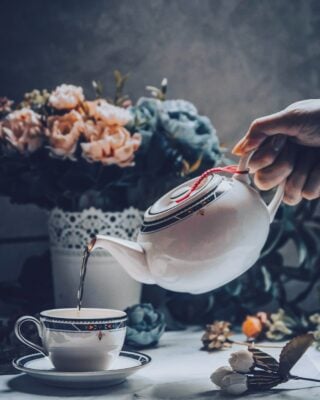We all have seen it, that little oily layer of scum on the surface of a freshly brewed cup of tea. But what is it really, and more importantly is it harmful? Well, the quick answer is no, but before we go on, the scum should not be mistaken for the foam you sometimes see, which is a natural chemical reaction when water and tea leaves are combined.
Initially, it was believed that the scum was formed as a side-product of heating the tea leaves, which would then release an oily substance into the tea. However, in 1994 researchers from Imperial College London found that aside from organic chemicals, the scum consisted for at least 15% out of calcium carbonate. Further testing with several combinations of water used for brewing tea revealed that the calcium value in the water is a major contributor to the layer of scum.

As rain falls to the ground and makes its way to our water systems it picks up all kinds of minerals like chalk, lime, magnesium and calcium along the way. This is called ‘hard’ water. Luckily, there are no health risks in drinking hard water or tea made with hard water, although it could affect the taste quite a bit.
The level of minerals in your water, its pH value, depends on where you live and where you get your water from. But even if your tapwater has a high carbon value there are a few methods to prevent it from affecting your tea. First you could use bottled water with a more satisfactory pH value (the pH value of pure water is 7). The other option is to use some kind of filtration, distillation, or purification system to filter the minerals out of your tapwater.



